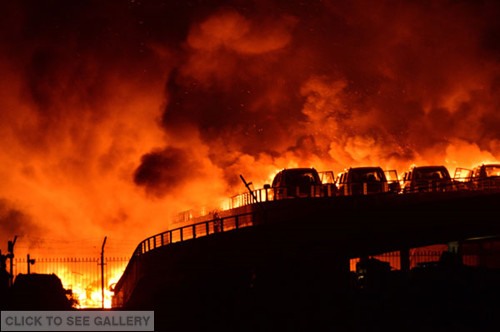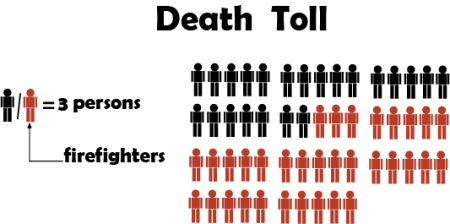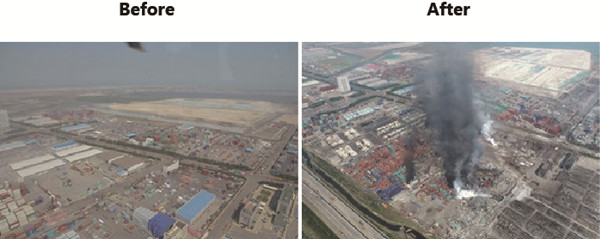Tianjin Blast
Explosions at a warehouse containing large quantities of dangerous chemicals rocked North China's port city of Tianjin in August. The massive blast has been a hot topic on social networks for over two months. Fragmentary pieces of information have slowly been turned into essential facts.
Overview
An explosion ripped through a warehouse at Binhai New Area in Tianjin at 11:34 pm on August 12, 2015. The warehouse stored dangerous chemical goods. The near-earthquake magnitude of the first blast hit 2.3, the equivalent of detonating three tons of TNT. The second blast happened 30 seconds later and was even more powerful, the equivalent of 21 tons of TNT, according to China Earthquake Administration. Another two major blasts occurred at 9 am on Thursday. A series of smaller explosions came at around every 10 minutes.
Casualties
As of September 11, 2015, the death toll had risen to 165, including 99 firefighters, 55 civilians and 11 police officers.
Rescue efforts
The country's top health authority provided a medical response. Volunteers rushed to hospitals for blood donation. Specialized anti-chemical warfare troops also joined the operation. Satellites were mobilized to help with search-and-rescue as well as damage control after the massive blasts.
Damage
The blast affected the daily life of residents living nearby and took a toll on the city's economy.
Aftermath
The government has allocated compensation for victims of the blast, while a fund has been established to repair and rebuild apartments damaged in the deadly explosions.
A fund of five billion yuan (780 million U.S. dollars) has been established by investors and real estate developers to repair and rebuild about 10,000 apartments damaged in the deadly Tianjin explosions last month.
Families of the firefighters who died during the Tianjin warehouse explosions will get some compensation.























































